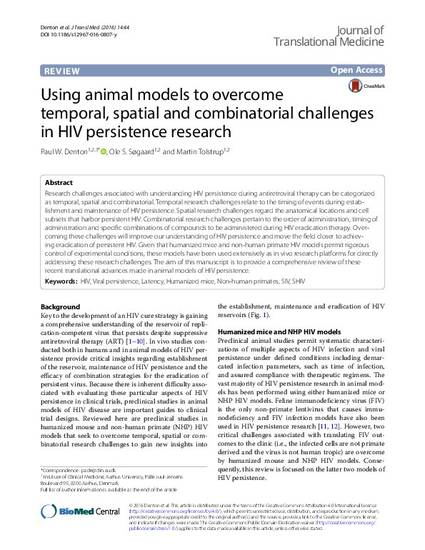
Research challenges associated with understanding HIV persistence during antiretroviral therapy can be categorized as temporal, spatial and combinatorial. Temporal research challenges relate to the timing of events during establishment and maintenance of HIV persistence. Spatial research challenges regard the anatomical locations and cell subsets that harbor persistent HIV. Combinatorial research challenges pertain to the order of administration, timing of administration and specific combinations of compounds to be administered during HIV eradication therapy. Overcoming these challenges will improve our understanding of HIV persistence and move the field closer to achieving eradication of persistent HIV. Given that humanized mice and non-human primate HIV models permit rigorous control of experimental conditions, these models have been used extensively as in vivo research platforms for directly addressing these research challenges. The aim of this manuscript is to provide a comprehensive review of these recent translational advances made in animal models of HIV persistence.
Available at: http://works.bepress.com/paul-denton/8/

© 2016 The Authors
DOI 10.1186/s12967-016-0807-y